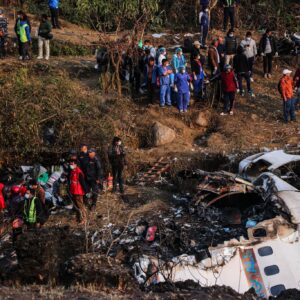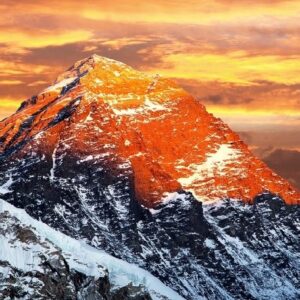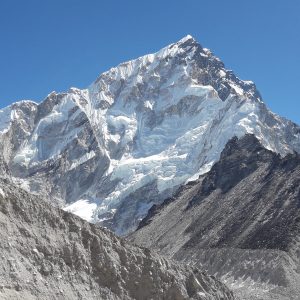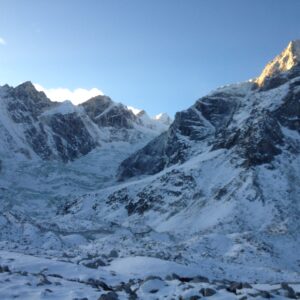
Best Places to Visit in Nepal
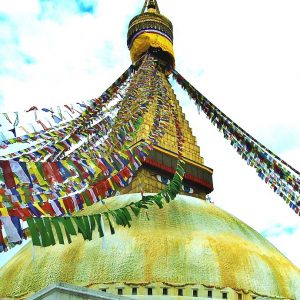 13 Feb, 2018
13 Feb, 2018
Nepali people take pride in Nepal's history, culture, geology, unity in diversity, and most of all - The Mountains. This pride has served well for tourists, as they love the hospitality of Nepali people. Nepali culture values guests as gods, making Nepal a unique place to enjoy world-class hospitality.
If you're wondering where to visit in Nepal, trekking is always the best choice. However, if you prefer short hikes and cultural experiences over long treks, there are many sacred and culturally rich areas to explore. Note: Some places may require longer visits and special permission, so be sure to check all necessary information.
Best Places to Visit in Nepal
Kathmandu Valley
Kathmandu (1400 m), the capital city of Nepal, is surrounded by four small peaks: Shivapuri, Phulchoki, Nagarjun, and Chandragiri, making it a valley. Short hikes to these peaks are ideal for busy tourists. Kathmandu is the most facilitated part of Nepal, with a population of 1.4 million people. The city, known as "The City of Temples," boasts a rich history, with Durbar Squares dating back nearly 2000 years. The UNESCO-listed world heritage sites within a 15 KM radius include Pashupatinath, Swayambhunath, Boudha Stupa, and the Durbar squares of Kathmandu, Bhaktapur, and Patan.
To fully experience the Kathmandu Valley and explore its most sacred sites, hiring an experienced guide or consulting with a reputed travel agency is the best option.
Related read: Best Places to Visit in Kathmandu Valley
Bhaktapur
Bhaktapur, an ancient Newari city, is located 13 KM (8 miles) from Kathmandu. Once the capital of Nepal during the reign of the Malla Kings, Bhaktapur is renowned for its well-preserved architecture, palace courtyards, and old city center. Known for its traditional art, architecture, and crafts, Bhaktapur is less crowded and peaceful, making it a favorite among tourists. Key landmarks include Nyatapola Temple, Bhairab Nath Temple, Changu Narayan, Dattatreya Temple, and Kailashnath Mahadev Statue.
Lalitpur (Patan)
Patan, also known as Lalitpur, is the third largest city in Nepal, covering an area of 15.43 km² (5.96 sq mi). Located just 5 km south of Kathmandu, Patan is famous for its Newari architecture and hosts the UNESCO-listed Patan Durbar Square. The Durbar Square, once the palace of the ancient kings of Patan, showcases traditional arts and crafts. Major attractions include the Patan Museum, The Golden Window, Mahabouddha Temple, and Krishna Temple.
Nagarkot
Nagarkot is about 35 km from Kathmandu and offers breathtaking views of the Himalayas, including Mount Everest, Manaslu, Langtang, and Annapurna ranges. The altitude of around 2200 meters makes it an ideal spot for short hikes and viewing spectacular sunrises and sunsets. Nagarkot was historically a fort used by Nepalese rulers to keep an eye on neighboring kingdoms.
Dhulikhel
Dhulikhel, located 30 KM east of Kathmandu, sits at an altitude of 1,550m. This ancient Newari village offers stunning Himalayan views and historical Newari architecture. Popular activities include hiking to Namo Buddha, known for its legend of Buddha sacrificing himself to a starving tigress and her cubs. Dhulikhel is a great choice for a short hike or cultural exploration.
Pokhara
Pokhara is a popular tourist hub and base for starting short hikes or longer treks, such as the Annapurna Base Camp Trek. The city offers a range of adventurous activities, including bungee jumping, paragliding, zip-lining, and boating. Key attractions include Phewa Lake, David's Fall, Pokhara Museum, Gupteshwor Cave, and Barahi Temple. Short hikes to Sarangkot and Poonhill offer stunning mountain views.
Related read: Things to do in Pokhara
Jomsom
Jomsom, the capital of Mustang District, is a starting point for major treks like Upper Mustang and Muktinath. It lies at nearly 2800 meters altitude, offering close views of Mt. Dhaulagiri and Mt. Nilgiri. Jomsom is known for its Tibetan culture and serves as a gateway to rural and preserved areas of Nepal. Key attractions include a 500-year-old monastery and the Kali Gandaki River, where holy stones (Shaligrams) can be found.
Annapurna Conservation Area
The Annapurna Conservation Area (ACAP) is Nepal's largest and first protected area project, covering 7,629 km². It includes the Annapurna I peak and features diverse flora and fauna, including 1,226 species of flowering plants, 102 mammals, 474 birds, 39 reptiles, and 22 amphibians. The area is known for its rich cultural diversity, with ethnic groups like Magars, Gurungs, Thakalis, Manange, and Loba.
Chitwan National Park
Chitwan National Park is a popular destination for jungle safaris, offering activities like elephant rides, jungle walks, and canoe rides. The park is home to species such as one-horned rhinos, Bengal tigers, leopards, and more than 400 bird species. The Tharu culture, known for its unique traditions and dances, is another attraction.
Related read: Things to do in Chitwan
Lumbini
Lumbini, the birthplace of Lord Gautam Buddha, is a major pilgrimage site. It features historical sites like the Maya Devi Temple, part of the UNESCO World Heritage list. Lumbini is significant for pilgrimage travelers and those interested in ancient architecture and history, dating back to 500 B.C.
Langtang National Park
Langtang National Park is the first Himalayan national park project in Nepal, covering 1,710 km². The park offers views of the Langtang Lirung Mountain and is known for its high-altitude lakes, such as Gosainkunda. The park is home to rare animals like the red panda and a variety of birds, including the Himalayan honey guide.
Bardia National Park
Bardia National Park, the largest protected area in the Terai region, covers 968 km². It is home to endangered species like the rhinoceros, wild elephant, and Gangetic dolphin. Activities include elephant rides, jungle walks, and bird watching.
Sagarmatha National Park
Sagarmatha National Park, home to Mount Everest, covers 1,148 km² and includes mountains like Lhotse and Ama Dablam. The park is known for its diverse wildlife, including snow leopards and lesser pandas. The Sherpa culture and ancient monasteries like Tengboche and Thame are key attractions.
Dhorpatan Hunting Reserve
Dhorpatan Hunting Reserve, the only hunting reserve in Nepal, covers 1,325 km² and ranges in altitude from 2,850 to 5,500 meters. It offers hunting opportunities for blue sheep and Himalayan tahr. The reserve also features Hindu pilgrimage sites like Dhorbaraha.
Shivapuri Watershed & Wildlife Reserve
Shivapuri Watershed & Wildlife Reserve covers 159 km² and supplies water to Kathmandu Valley. The reserve is home to a variety of wildlife, including leopards and barking deer, as well as diverse bird species.
Khaptad National Park
Khaptad National Park, located in the Far-Western Development region, covers 225 km². The park is known for its rich biodiversity, including 224 species of medicinal herbs and 576 plant species. It is a great location for bird watching and offers spiritual experiences at sites like the Ashram of Khaptad Baba.
Dharan
Dharan, the second-largest city in Eastern Nepal, is known for producing football players and setting fashion trends. The city features diverse ethnic groups and temples like Dantakali and Budha Subba Temple. Popular activities include hiking, visiting local pubs, and enjoying barbecues at Yalambar Park.
Ilam
Ilam, known for tea production, is famous for its green hills and Antu Danda, a hill station offering stunning sunrise and sunset views. The region is also a habitat for the red panda and rare birds. Ilam is known for its six A’s: Alu (potato), Aaduwa (ginger), Olan (milk), Alainchi (cardamom), Amriso (broom grass), and Akabare Khursani (chilies).
Janakpur
Janakpur, located in the Terai region, is an important religious site for Hindus and the birthplace of Goddess Sita. Key attractions include the Janaki Temple and Dhanushadham, linked to the epic Ramayana. The city is especially popular during Hindu festivals.
Bandipur
Bandipur, a hilltop municipality in Tanahun District, is known for its well-preserved Newari culture and architecture. It offers hiking opportunities through tribal villages and verdant forests. Key attractions include the Shiva shrine and silkworm farming.
Nuwakot Durbar
Nuwakot Durbar, built during the reign of Prithvi Narayan Shah, offers a glimpse into Nepal's architectural and historical heritage. The Durbar, also known as "Sat Talle Durbar," is a seven-story palace with surrounding Newari culture and villages.
Manaslu Conservation Area
The Manaslu Conservation Area, located in Gorkha district, covers 1,663 km² and includes Mount Manaslu. The area features glaciers, Himalayas, and diverse wildlife, including snow leopards. The region is populated by Buddhist communities and has several monasteries.
Badimalika
Badimalika, located in the Far Western region, is known for the Badimalika Temple, a significant pilgrimage site. The temple offers stunning views of the Himalayan range and is surrounded by diverse flora and fauna. Visitors can reach the temple by trekking, driving, or flying.
Manang
Manang, situated at an altitude of 3,519 meters, is a prime destination for high-altitude trekking. The village is an important trading point between Nepal and Tibet. Manang offers views of peaks like Pisang, Chulu, Gangapurna, Tilicho, and more. Key attractions include the Palace of Ghale King and several Himalayan peaks.
Rara National Park
Rara National Park, the smallest national park in Nepal, is home to the country's largest lake, Rara. The park offers a pristine environment and is home to species like the musk deer and Himalayan black bear. Despite its remote location, Rara National Park is considered one of the finest parks in the world.
Gorkha
Gorkha is the birthplace of King Prithvi Narayan Shah, the unifier of Nepal, and the legendary Gurkha soldiers. The district is home to the famous Manakamana Temple and Gorkha Durbar, a historical palace offering panoramic views of the area.
Shey-Phoksundo National Park
Shey-Phoksundo National Park, the largest national park in Nepal, is located in the Dolpo district. The park includes Nepal's deepest lake, Phoksundo, and is influenced by Tibetan culture. The park is home to endangered species like the snow leopard and blue sheep, as well as ancient monasteries like Shey Gompa and Thasung Gompa.


